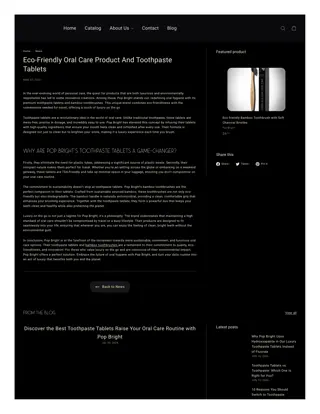
Effective PHY4803L Presentation Guidelines
Discover comprehensive guidelines for PHY4803L presentations including slide recommendations, talk structure, grading considerations, and how to best prepare for a successful presentation with your partner. Follow these recommendations to ace your presentation and impress your audience.
Download Presentation

Please find below an Image/Link to download the presentation.
The content on the website is provided AS IS for your information and personal use only. It may not be sold, licensed, or shared on other websites without obtaining consent from the author. If you encounter any issues during the download, it is possible that the publisher has removed the file from their server.
You are allowed to download the files provided on this website for personal or commercial use, subject to the condition that they are used lawfully. All files are the property of their respective owners.
The content on the website is provided AS IS for your information and personal use only. It may not be sold, licensed, or shared on other websites without obtaining consent from the author.
E N D
Presentation Transcript
PHY4803L presentations Student 1 Name and Student 2 name Date/of/presentation UPDATED: April 9, 2020 1
The formal stuff Slides should be submitted to Canvas by 8am the morning of the presentation. You will have to work out with your partner how to share the screen (only one shares or both of you share, which will take time changing back and forth)/ control changing of slides. The earlier you submit slides the better, so we can offer any last minute suggestions Powerpoint and pdf are both acceptable. Standard 4:3 aspect ratio recommended (like these) Talks should take 20 min TOTAL per group = 15 min presentation + 5 mins questions. Slide numbers should be included on all slides. Necessary for question asking! Student 1 Name and Student 2 Name PHY4803L presentation guidelines 2
Talk contents Introduce yourselves at the beginning. Sections can be laid out roughly as with the reports: Introduction, theory, apparatus and experiment, results, analysis (inc. errors), conclusion, references*. Instead of appendices, it s common to have bonus slides in case someone asks a specific question. Good idea to anticipate questions that could be asked (e.g. things the CQs aim at, things asked in the lab writeup) and prepare slides to answer In the interest of time, omit a contents slide. Summary slide is necessary. Thank the audience and/or invite questions at the end. Student 1 Name and Student 2 Name PHY4803L presentation guidelines 3
Grading considerations As with reports, the most heavily weighted part of the content is the analysis (and error analysis). You don t have to fight over who gets to talk about the analysis though most points for content will be shared between group members. Example breakdown: Speaker 1: Introduction, theory, apparatus and experiment. Speaker 2: Results, analysis, conclusions. We don t recommend switching between speakers too often (three switches max). Quality of slides and clarity of presentation make up ~30% each, content of the talk is the remaining 40% (more detail later). Student 1 Name and Student 2 Name PHY4803L presentation guidelines 4
Slide recommendations Slide titles are necessary. Bullets should be concise but not too terse your talk should be easy to follow and understand to someone unable to attend the presentation and viewing the slides after the fact. Avoid reading directly from bullets they re mainly there to give you reminders of what to discuss. If you re including formulae, use LaTeX pdfs (LaTeXit is great for just formulae on Mac). Copy-paste screenshots should be last resort! Figures: Use vector graphics where possible (pdf, eps etc.). If using pixel graphics (png, jpg, etc.) make sure high enough res. Photographs are great for explaining apparatus. Videos can be a useful addition, but shouldn t take the place of the talk itself! Include a footer with some basic information about your talk. Don t try to cram too much information on one slide (this slide is an example of what not to do). Each slide will take on average roughly 1min to talk through. Take that into account when planning your talk. Don t go over the top with powerpoint animations. They rarely add anything of value. Try to get at least one figure, plot, or formula on each slide. Slides with just bullets are boring (yes I know). Student 1 Name and Student 2 Name PHY4803L presentation guidelines 5
Speaking recommendations Don t try to talk too fast to cram in more information (you will actually communicate less). Gesticulation can be helpful but can also be distracting in excess, or when not relevant. As above for laser pointing. Only use when necessary. Eye contact with the audience helps to maintain engagement. Speak at an audible level (but don t yell). We ll let you know if you can t be heard. Try to communicate some enthusiasm about your experiment! This goes a long way for audience engagement. Student 1 Name and Student 2 Name PHY4803L presentation guidelines 6
Q&A session All students are encouraged to ask questions! This will be to the question asker s benefit too. Don t be afraid to confirm that you understood the question. Reformulate the question in your own words before answering: Useful when audience didn t hear, plus it gives you time to think! It s better to admit you don t know an answer, than to make something up. It can be done gracefully. Think about what questions people are likely to ask. If you re really prepared, you might have a backup slide to cover them. Student 1 Name and Student 2 Name PHY4803L presentation guidelines 7
Grading rubric Content 42.5%: Slides 27.5%: Figures and plots 15%. Introduction 5%. Bullets, organization and clarity 7.5%. Theory 5%. Style 5% (yes I know I get 0% for these slides). Apparatus 5%. Presentation 30%: Experimental procedure 5%. Clarity of spoken presentation: 15%. Analysis and errors 15%. Audience engagement: 5%. Conclusions 5%. Question and answer session: 5%. References 2.5%. Timing: 5%. Student 1 Name and Student 2 Name PHY4803L presentation guidelines 8
Some final points We will try to set up video recording on request (not required), so you can review your talk later if you like. Practicing your talk will help you to convey information clearly and concisely. Reading the talk from notes is definitely not recommended, but is of course better than giving no talk at all. If you have concerns about preparing your talk, let us know as soon as possible. Student 1 Name and Student 2 Name PHY4803L presentation guidelines 9






















